Wildflowers of the Adirondacks:
Foamflower (Tiarella cordifolia)

Foamflower (Tiarella cordifolia) is a native wildflower that bears a cluster of small, white, feathery flowers in late spring. It grows in northern hardwood forests in the Adirondack Mountains of upstate New York.
Foamflower is a member of the Saxifrage family. The genus name (Tiarella) means little tiara, a diminutive of the Greek word tiara (turban). The name is said to refer to the shape of the seed capsule. Cordifolia, meaning heart-shaped, refers to the shape of the leaves.
Foamflower derives its common name from the feathery appearance of its white flowers. Other common names for this species include Heartleaf Foamflower, Heart-leaved Foam-flower, Foam-flower, Heart-leaf Foam-flower, Heart-leaf Foamflower, Clumping Foamflower, and False Miterwort. The latter name derives from the plant's resemblance to Miterwort.
Identification of Foamflower
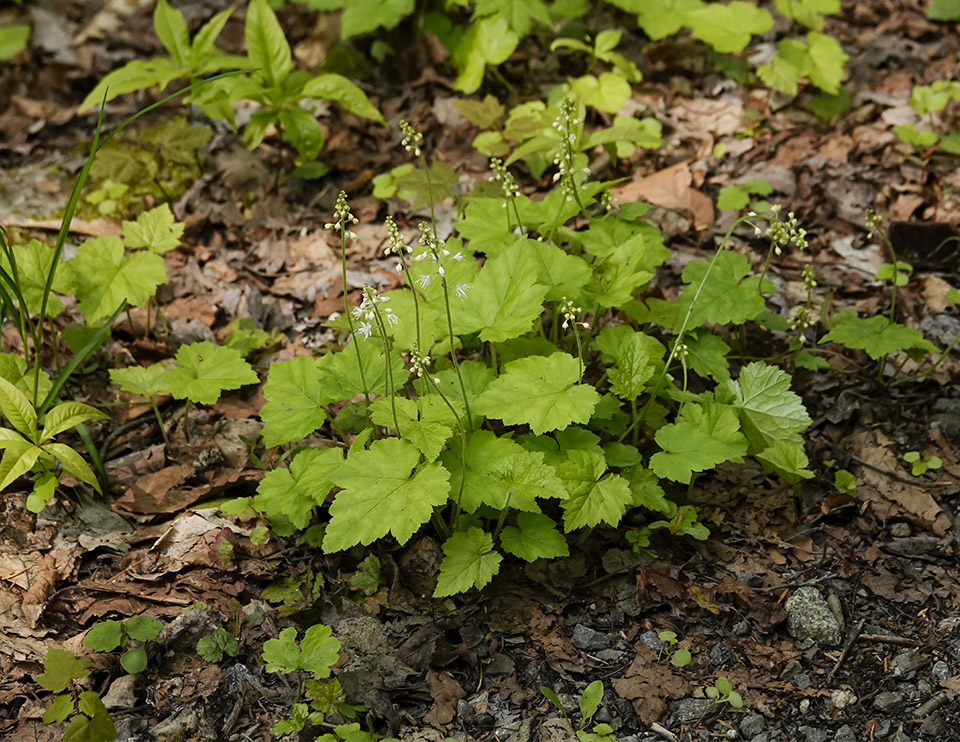
Foamflower is a perennialPerennial: An herbaceous plant that lives for more than two growing seasons. Perennial plants grow and bloom over spring and summer, die back every fall and winer, and then return in the spring from their rootstock. plant growing four to 14 inches tall. It spreads by underground stems and forms colonies.
Foamflower leaves are lobed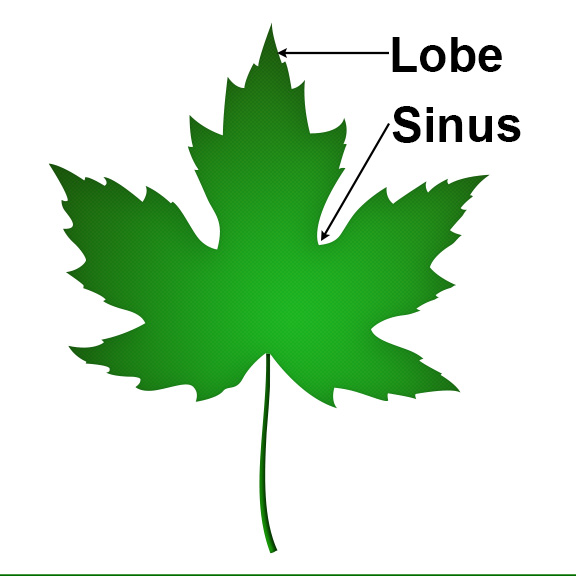 Lobe: A projection from an edge of a plant structure (such as a leaf), larger than a tooth. Lobed leaves are leaves with distinct protrusions, either rounded or pointed. and heart-shaped. They are two to four inches long and sharply toothed
Lobe: A projection from an edge of a plant structure (such as a leaf), larger than a tooth. Lobed leaves are leaves with distinct protrusions, either rounded or pointed. and heart-shaped. They are two to four inches long and sharply toothed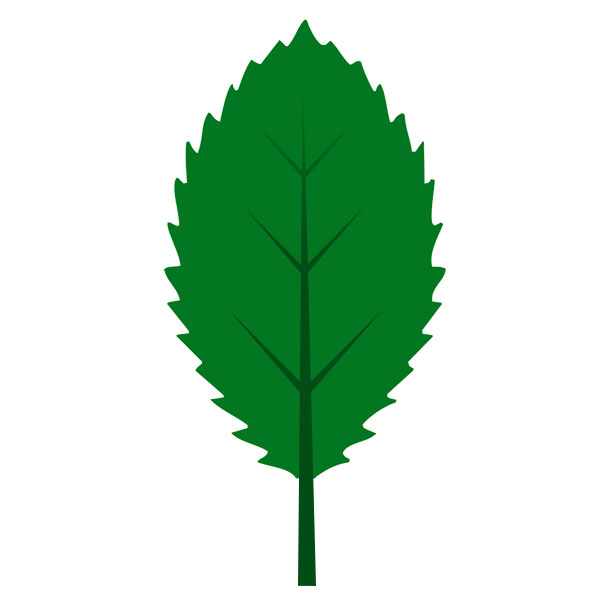 Toothed: Leaves which have a saw-toothed edge.. They are basalBasal: Leaves are confined to the base of the stem. , meaning that the leaves grow only from the base of the plant. The leaves are generally semi-evergreen in our area; they often turn a reddish bronze as cold weather sets in.
Toothed: Leaves which have a saw-toothed edge.. They are basalBasal: Leaves are confined to the base of the stem. , meaning that the leaves grow only from the base of the plant. The leaves are generally semi-evergreen in our area; they often turn a reddish bronze as cold weather sets in.
The flowers form a long terminal cluster (inflorescence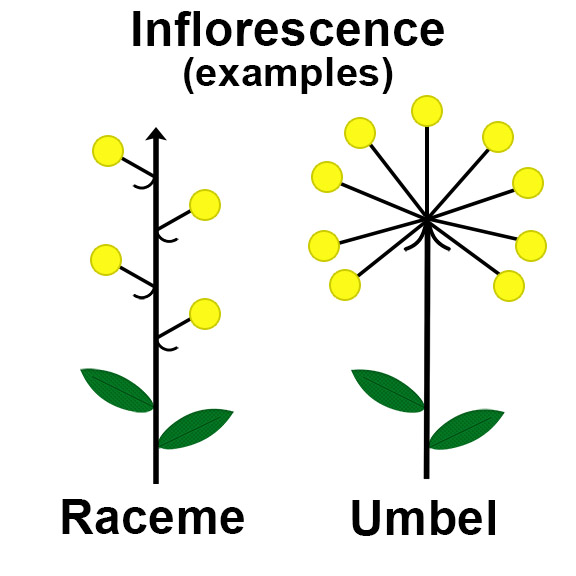 Inflorescence: A group or cluster of flowers arranged on a stem. ) on a leafless stalk.
Inflorescence: A group or cluster of flowers arranged on a stem. ) on a leafless stalk.
- Each star-shaped flower is 1/4 inch wide and has five small blunt sepals
.gif) Sepals: The parts that look like little green leaves and cover the outside of a flower bud to protect the flower before it opens. and five delicate white petals
Sepals: The parts that look like little green leaves and cover the outside of a flower bud to protect the flower before it opens. and five delicate white petals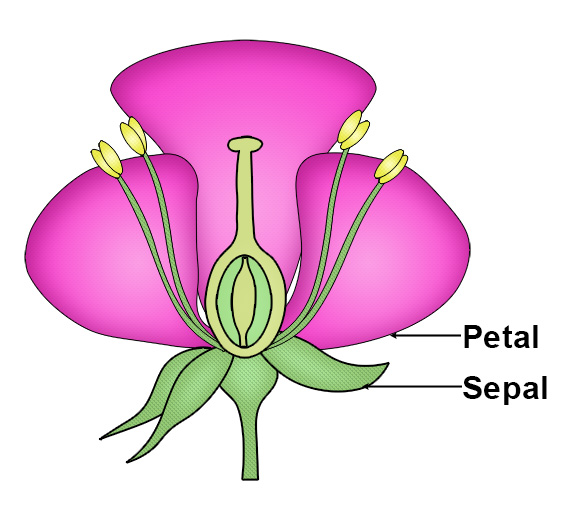 Petals: Modified leaves that surround the reproductive parts of flowers. Petals are often brightly colored or unusually shaped to attract pollinators..
Petals: Modified leaves that surround the reproductive parts of flowers. Petals are often brightly colored or unusually shaped to attract pollinators.. - The cluster is about four inches in length and rises above the leaves.
- The long, slender stamens
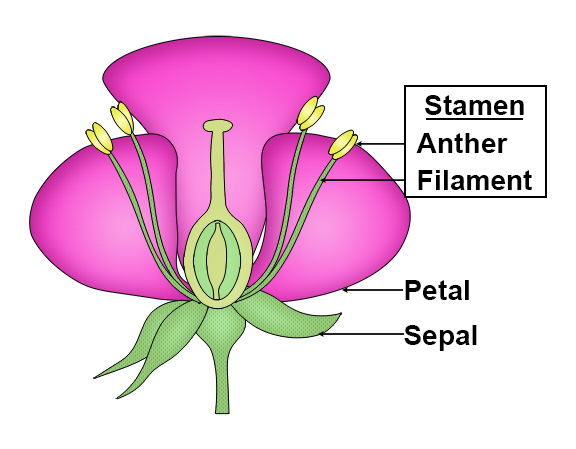 Stamen: The male part of the flower, made up of the filament and anther. give the spikes of white flowers a frothy appearance.
Stamen: The male part of the flower, made up of the filament and anther. give the spikes of white flowers a frothy appearance.
Foamflower's feathery white flowers are reminiscent of those of Canada Mayflower. However, Canada Mayflower is a somewhat smaller plant. However, its leaves are oviate and clasp its zigzagging stems, contrasting with Foamflower's lobed, basal leaves.
In the Adirondacks, Foamflower usually begins blooming in late May, with the blooming period coming to an end by mid-June.
- A tally of flowering dates for the upland Adirondack areas compiled by Michael Kudish, based on data collected from the early seventies to the early nineties, lists the earliest flower date as 17 May, the median date as 23 May, and the latest date as 12 June.
- This pattern is also seen by an examination of bloom times on iNaturalist. In 2017, research-grade observations for Foamflower in bloom extended from 27 May to 8 June. In 2018, this species was observed flowering from 24 May to 9 June. In 2019, observed bloom times extended from 26 May to 13 June. In 2020, observed bloom times extended from 25 May to 12 June.
Uses of Foamflower
Although Foamflower has no known edible uses, Native Americans used it to treat a variety of ailments. For instance, the Cherokee used an infusion of the plant as an oral aid. The Iroquois used a poultice of smashed roots to apply to wounds and an infusion of dried leaves to relieve sore eyes. The Malecite used an infusion of the roots to treat diarrhea.
Wildlife Value of Foamflower
Foamflower has minimal wildlife value as food or cover. This plant reportedly is browsed by Ruffed Grouse, but it represents only a small proportion of the diet of this species.
Distribution of Foamflower
Foamflower is found in eastern North America, from Nova Scotia to Ontario and Minnesota, south to Michigan, Georgia and Virginia. It is listed as endangered in New Jersey and Wisconsin.
This species is listed as present in most counties in New York State. It is found in all counties within the Adirondack Park Blue Line. (Although the New York Flora Atlas indicates that there are no vouchered specimens for Franklin County, the list of 95 research-grade observations in the Adirondack Park on the iNaturalist data base includes many for sites within the county.)
Habitat of Foamflower
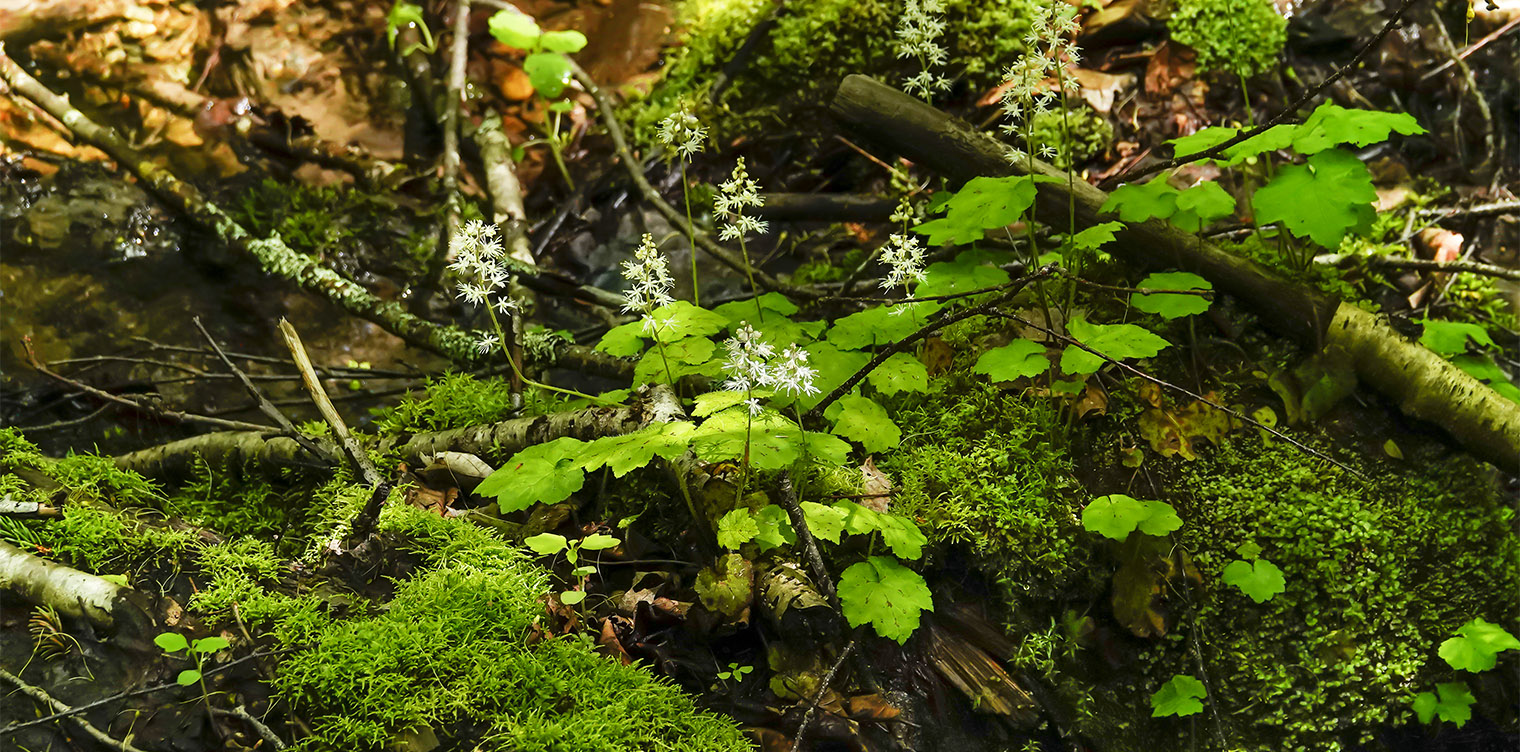
Foamflower grows in shade or partial shade. It can grow in well-drained to imperfectly drained soils. It generally prefers higher-pH sites and rich soils.
This species is common in the Adirondacks. It is usually found under deciduous trees in northern hardwood forests, but it is also seen along streams in conifer and mixed woods forests. Foamflower is found in several ecological communities:
You can find Foamflower along many of the trails covered here, on those sections that wind through northern hardwood forests on moist, well-drained soils.
- In this ecological community, Sugar Maple and American Beech are codominant. Other trees include Yellow Birch and Red Maple. A few Eastern Hemlock may also be present.
- Understory plants include American Beech and Sugar Maple saplings, as well as Striped Maple. Characteristic shrubs include Hobblebush, American Witch-hazel, and Alternate-leaf Dogwood.
- On the forest floor, look for ferns such as Spinulose Wood Fern and Intermediate Wood Fern. Other wildflowers found growing near Foamflower include Starflower, Indian Cucumber-root, and Wild Sarsaparilla.
- Characteristic breeding birds in this ecological community include Red-eyed Vireos, Black-throated Blue Warblers, and Ovenbirds.
References
Michael Kudish. Adirondack Upland Flora: An Ecological Perspective (The Chauncy Press, 1992), pp. 60, 150.
Michael Kudish. Paul Smiths Flora II: Additional Vascular Plants; Bryophytes (Mosses and Liverworts); Soils and Vegetation; Local Forest History (Paul Smith's College, 1981), pp. 42, 44-47.
New York Flora Association. New York Flora Atlas. Foamflower. Tiarella cordifolia L. Retrieved 4 December 2019.
United States Department of Agriculture. The Plants Database. Heartleaf Foamflower. Tiarella cordifolia L. Retrieved 4 December 2019.
Flora of North America. Tiarella cordifolia Linnaeus. Retrieved 27 March 2017.
iNaturalist. Adirondack Park Observations. Heartleaf Foamflower. Tiarella cordifolia. Retrieved 14 November 2021.
NatureServe Explorer. Online Encyclopedia of Life. Tiarella cordifolia - L. Retrieved 27 March 2017.
Native Plant Trust. Go Botany. Foam-flower. Tiarella cordifolia L. Retrieved 4 December 2019.
New York State. Department of Environmental Conservation. New York Natural Heritage Program. Ecological Communities of New York State. Second Edition (March 2014), pp. 71-72, 119-120, 120-121, 121. Retrieved 17 October 2015.
New York Natural Heritage Program. 2021. Online Conservation Guide for Beech-Maple Mesic Forest. Retrieved 24 November 2021.
New York Natural Heritage Program. 2021. Online Conservation Guide for Hemlock-Hardwood Swamp. Retrieved 24 November 2021.
New York Natural Heritage Program. 2021. Online Conservation Guide for Hemlock-Northern Hardwood Forest. Retrieved 24 November 2021..
New York Natural Heritage Program. 2021. Online Conservation Guide for Maple-Basswood Rich Mesic Forest. Retrieved 24 November 2021.
New York Natural Heritage Program. 2021. Online Conservation Guide for Rich Hemlock-Hardwood Peat Swamp. RRetrieved 24 November 2021.
New York State. Adirondack Park Agency. Preliminary List of Species Native Within the Adirondack Park Listed Alphabetically by Scientific Name and Sorted by Habit. Volume 1. Updated 10.23.2006, p. 39. Retrieved 26 January 2017.
Connecticut Botanical Society. Foamflower. Tiarella cordifolia L. Retrieved 27 March 2017.
University of Wisconsin. Flora of Wisconsin. Tiarella cordifolia L. Retrieved 27 March 2017.
Lady Bird Johnson Wildflower Center. Tiarella cordifolia. Retrieved 27 March 2017.
Mark J. Twery, et al. Changes in Abundance of Vascular Plants under Varying Silvicultural Systems at the Forest Ecosystem Research and Demonstration Area, Paul Smiths, New York. USDA Forest Service. Research Note NRS-169. Retrieved 22 January 2017, p. 8.
Plants for a Future. Tiarella cordifolia - L. Retrieved 4 December 2019.
University of Michigan. Native American Ethnobotany. A Database of Foods, Drugs, Dyes and Fibers of Native American Peoples, Derived from Plants. Heartleaf Foamflower. Tiarella cordifolia L. Retrieved 27 March 2017.
Allen J. Coombes. Dictionary of Plant Names (Timber Press, 1994), p. 182.
Charles H. Peck. Plants of North Elba. (Bulletin of the New York State Museum, Volume 6, Number 28, June 1899), p. 94. Retrieved 22 February 2017.
Anne McGrath. Wildflowers of the Adirondacks (EarthWords, 2000), p. 11.
Doug Ladd. North Woods Wildflowers (Falcon Publishing, 2001), p. 226.
Lawrence Newcomb. Newcomb's Wildflower Guide (Little Brown and Company, 1977), pp. 178-179.
Roger Tory Peterson and Margaret McKenny. A Field Guide to Wildflowers. Northeastern and North-central North America (Houghton Mifflin Company, 1968) pp. 68-69.
William K. Chapman, et al. Wildflowers of New York in Color (Syracuse University Press, 1998), pp. 8-9.
